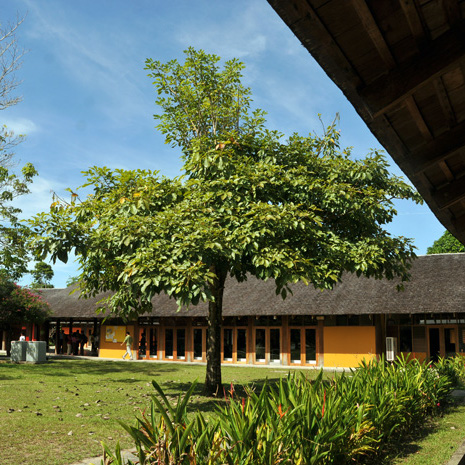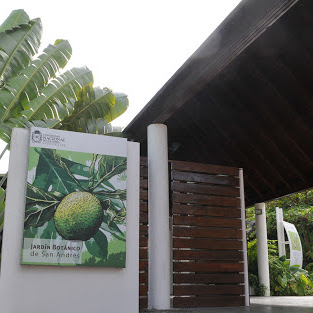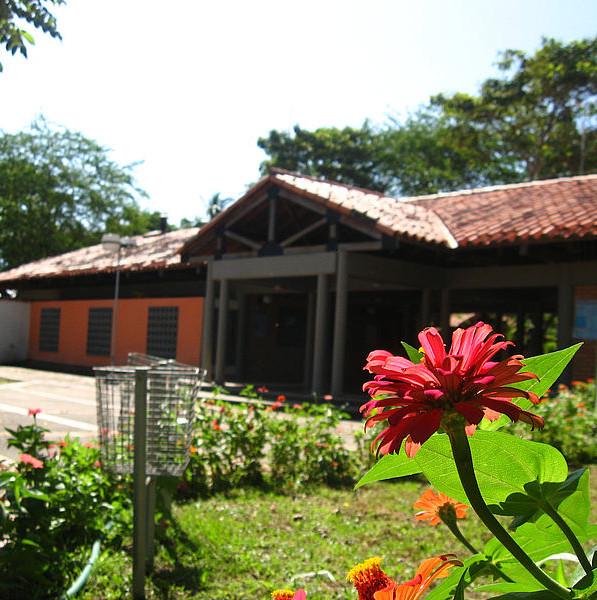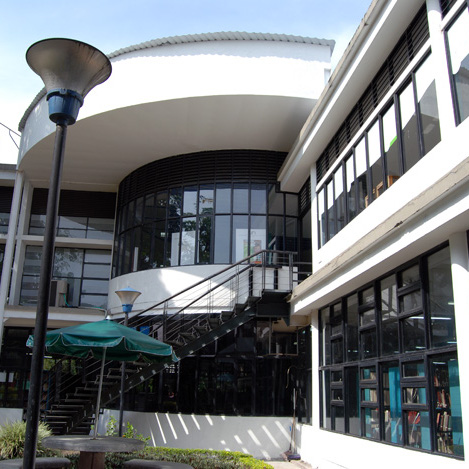Published
Crustal displacement in Vietnam using CORS data during 2018 - 2021
Desplazamiento de la corteza en Vietnam a través de información de estaciones CORS en el período 2018-2021
DOI:
https://doi.org/10.15446/esrj.v27n1.102630Keywords:
PPP, CORS, GNSS time series, crustal displacement (en)Posicionamiento por Punto Preciso, series temporales del Sistema Global de Navegación por Satélite, desplazamiento de la corteza, Estaciones de Referencia de Operación Continua (es)
Downloads
Continuously Operation Reference Stations (CORS) networks provide surveying, mapping, and positioning services and play a crucial role in determining crustal displacement. This study processed the continuous Global Navigation Satellite System (GNSS) data collected from 55 CORS stations in the TAST’s CORS in Vietnam to determine the crustal displacement in Vietnam from 2018 to 2021. The processing was performed using online Precise Point Positioning (PPP) services and the displacement model to estimate the velocity of the position time series. The result showed that the horizontal velocity field of all CORS stations is uniform in magnitude and direction, ranging from 25.3 to 42.6 mm/year with accuracy from ±0.1 to ±1.0 mm/year in the south-east direction in the International Terrestrial Reference Frame 2014 (ITRF2014). This study confirms the stability and accuracy of GNSS data from the TAST’s CORS network for crustal displacement analysis.
Las redes basadas en Estaciones de Referencia de Operación Continua (CORS) no solo proveen servicios de posicionamiento, mapeo y sondeo sino que además juegan un rol determinante en la determinación del desplazamiento de la corteza. Para este estudio se procesó la información relacionada con el Sistema Global de Navegación por Satélite (GNSS) recolectada en 55 estaciones CORS de la empresa vietnamita TAST con el fin de determinar el desplazamiento de la corteza en Vietnam entre 2018 y 2021. El procesamiento se realizó con servicios en línea de Posicionamiento por Punto Preciso y se usó el modelo de desplazamiento para estimar la velocidad en la posición de las series temporales. Los resultados muestran que la velocidad horizontal para todas las estaciones CORS es uniforme en magnitud y dirección, con un rango entre 25.3 y 42.6 milímetros por año, con una precisión de ±0.1 a ±1.0 mm/año en la dirección sur-este, según el Marco Internacional de Referencia Terrestre de 2014. Este estudio confirma la estabilidad y precisión de la información GNSS de las redes CORS de la empresa TAST para el análisas del desplazamiento de la corteza.
References
Bellone, T., Dabove, P., Manzino, A. M., & Taglioretti, C. (2016). Real-time monitoring for fast deformations using GNSS low-cost receivers. Geomatics, Natural Hazards and Risk, 7(2), 458–470. https://doi.org/10.1080/19475705.2014.966867
Choi, K. H., Kim, H. S., Lee, J. Y., Lim, J. H., & Lee, H. K. (2012). Real-time monitoring of detailed regional ionospheric activities by GPS CORS networks. The 14tth IAIN Congress 2012, Seamless Navigation (Challenges and Opportunities). http://www.ainegypt.org/event/papers/Full%20-%20KwangHoChoi%20-%20Real-Time%20Monitoring.pdf
Cibeira Urtiaga, Á., Berrocoso, M., Rosado, B., & Pazos, A. (2022). Detection and study of a high magnitude seismic event from GPS data: Case study of the 2011 Tohoku-Oki earthquake. Earth Sciences Research Journal, 26(2), 91–106. https://doi.org/10.15446/esrj.v26n2.97735
Cong Duong, C., Yun, H.-S., & Cho, J.-M. (2006). GPS measurements of horizontal deformation across the Lai Chau—Dien Bien (Dien Bien Phu) fault, in Northwest of Vietnam, 2002-2004. Earth, Planets and Space, 58(5), 523–528. https://doi.org/10.1186/BF03351949
Cong Khai, P., Tran, D. T., & Nguyen, V. H. (2020). GNSS/CORS-Based Technology for Real-Time Monitoring of Landslides on Waste Dump – A Case Study at the Deo Nai South Dump, Vietnam. Inżynieria Mineralna, 1(2). https://doi.org/10.29227/IM-2020-02-23
Damiani, T., & Freeman, W. (2019). Strengthening the NOAA CORS Network: Foundation CORS, Orbit Analysis, and Other Initiatives. AGU Fall Meeting Abstracts, G11A-07.
Ebner, R., & Featherstone, W. E. (2008). How well can online GPS PPP post-processing services be used to establish geodetic survey control networks? Journal of Applied Geodesy, 2(3). https://doi.org/10.1515/JAG.2008.017
Guo, Q. (2015). Precision comparison and analysis of four online free PPP services in static positioning and tropospheric delay estimation. GPS Solutions, 19(4), 537–544. https://doi.org/10.1007/s10291-014-0413-5
Kall, T., Oja, T., Kruusla, K., & Liibusk, A. (2021). New 3D velocity model of Estonia from GNSS measurements. Estonian Journal of Earth Sciences, 70(2), 107. https://doi.org/10.3176/earth.2021.08
Kouba, J., & Héroux, P. (2001). Precise Point Positioning Using IGS Orbit and Clock Products. GPS Solutions, 5(2), 12–28. https://doi.org/10.1007/PL00012883
Kun, S., & Yong, W. (2007). The development and application of CORS technology and its value in the solution for environment protect in the GMS. Greater Mekong Subregion Academic and Research Network 69, 69. http://gmsarnjournal.com/home/wp-content/uploads/2015/08/vol1no2-3.pdf
Minh, L. H., Masson, R., Bourdillon, A., Fleury, R., Hu, J.-C., Hung, V. T., Thanh, L. T., Thang, N. C., & Thanh, N. H. (2014). Recent crustal motion in Vietnam and in the Southeast Asia region by continuous GPS data. Vietnam Journal of Earth Sciences, 36(1), 1–13. https://doi.org/10.15625/0866-7187/36/1/4132
Myoung, C. J. (2015). Estimation of the Crustal Deformation Caused by Earthquake and Its Use in Updating Published Coordinates of Geodetic Control Points - A Case Study of the 2011 Tohoku Earthquake’s Impact in South Korea. Journal of the Korean Society of Surveying, Geodesy, Photogrammetry and Cartography, 33(6), 485–495. https://doi.org/10.7848/KSGPC.2015.33.6.485
Nguyen, N. L., Coleman, R., & Ha, M. H. (2021). Determination of tectonic velocities of some continuously operating reference stations (CORS) in Vietnam 2016-2018 by using precise point positioning. Vietnam Journal of Earth Sciences, 43(1), 1–12. https://doi.org/10.15625/0866-7187/15571
Nocquet, J. M. (2011). Apport de la géodésie spatiale à la connaissance de la géodynamique en Europe et en Méditerranée. Habilitation à Diriger Des Recherches. Université de Nice Sophia Antipolis, France.
Ocalan, T., Erdogan, B., Tunalioglu, N., & Durdag, U. M. (2016). Accuracy Investigation of PPP Method Versus Relative Positioning Using Different Satellite Ephemerides Products Near/Under Forest Environment. Earth Sciences Research Journal, 20(4), 1. https://doi.org/10.15446/esrj.v20n4.59496
Sagiya, T. (2004). A decade of GEONET: 1994-2003 - The continuous GPS observation in Japan and its impact on earthquake studies. Earth, Planets and Space, 56(8), 1994–2003. https://doi.org/10.1186/BF03353077
Sella, G. F., Dixon, T. H., & Mao, A. (2002). REVEL: A model for Recent plate velocities from space geodesy. Journal of Geophysical Research: Solid Earth, 107(B4), ETG 11-1-ETG 11-30. https://doi.org/10.1029/2000JB000033
Sharma, G., Kannaujiya, S., Gautam, P. K. R., Taloor, A. K., Champatiray, P. K., & Mohanty, S. (2021). Crustal deformation analysis across Garhwal Himalaya: Part of western Himalaya using GPS observations. Quaternary International, 575–576, 153–159. https://doi.org/10.1016/j.quaint.2020.08.025
Snay, R., Cline, M., Dillinger, W., Foote, R., Hilla, S., Kass, W., Ray, J., Rohde, J., Sella, G., & Soler, T. (2007). Using global positioning system-derived crustal velocities to estimate rates of absolute sea level change from North American tide gauge records. Journal of Geophysical Research: Solid Earth, 112(B4). https://doi.org/https://doi.org/10.1029/2006JB004606
Tran, D. T. (2013). Analyse rapide et robuste des solutions GPS pour la tectonique [Université Nice Sophia Antipolis]. https://tel.archives-ouvertes.fr/tel-00868030
Tran, D. T., Nguyen, Q. L., & Nguyen, D. H. (2021). General Geometric Model of GNSS Position Time Series for Crustal Deformation Studies -A Case Study of CORS Stations in Vietnam. Journal of the Polish Mineral Engineering Society, 1(2), 183–198. https://doi.org/10.29227/IM-2021-02-16
Tran, D. T., Nguyen, T. Y., Duong, C. C., Vy, Q. H., Zuchiewicz, W., Nguyen, Q. C., & Nguyen, V. N. (2013). Recent crustal movements of northern Vietnam from GPS data. Journal of Geodynamics, 69, 5–10. https://doi.org/10.1016/j.jog.2012.02.009
Tran, D. T., Nocquet, J.-M., Luong, N. D., & Nguyen, D. H. (2022). Determination of Helmert transformation parameters for continuous GNSS networks: a case study of the Géoazur GNSS network. Geo-Spatial Information Science, 1–14. https://doi.org/10.1080/10095020.2022.2138569
Tran, T. D., Dao, T. D., Vu, T. S., Luong, D. N., Vu, C. D., Bui, S. N., & Ha, H. T. (2016). Outlier detection in GNSS position time series. Science and Technology Development Journal, 19(2), 43–50. https://doi.org/10.32508/stdj.v19i2.665
Wu, W., Wu, J., & Meng, G. (2018). A Study of Rank Defect and Network Effect in Processing the CMONOC Network on Bernese. Remote Sensing, 10(3), 357. https://doi.org/10.3390/rs10030357
Xiao, R., Shi, H., He, X., Li, Z., Jia, D., & Yang, Z. (2019). Deformation Monitoring of Reservoir Dams Using GNSS: An Application to South-to-North Water Diversion Project, China. IEEE Access, 7, 54981–54992. https://doi.org/10.1109/ACCESS.2019.2912143
Yang, Y. F., Chen, X. P., Yao, M. H., Zhou, C. L., & Liao, C. M. (2020). Research on zenith tropospheric delay modeling of regional CORS network. The International Archives of the Photogrammetry, Remote Sensing and Spatial Information Sciences, XLII-3/W10, 1197–1200. https://doi.org/10.5194/isprs-archives-XLII-3-W10-1197-2020
Yu, J., Yan, B., Meng, X., Shao, X., & Ye, H. (2016). Measurement of Bridge Dynamic Responses Using Network-Based Real-Time Kinematic GNSS Technique. Journal of Surveying Engineering, 142(3), 4015013. https://doi.org/10.1061/(ASCE)SU.1943-5428.0000167
Yuan, Y., Rohm, W., Wu, S., Zhang, K., & Choy, S. (2012). Advanced Weather Prediction and Severe Weather Monitoring Using National GNSS CORS Infrastructure-Preliminary Results. Geospatial Science Research.
Zhao, W. Y., Zhang, M. Z., Ma, J., Han, B., Ye, S. Q., & Huang, Z. (2021). Application of CORS in Landslide Monitoring. IOP Conference Series: Earth and Environmental Science, 861(4), 042049. https://doi.org/10.1088/1755-1315/861/4/042049
How to Cite
APA
ACM
ACS
ABNT
Chicago
Harvard
IEEE
MLA
Turabian
Vancouver
Download Citation
CrossRef Cited-by
1. Mehmet Bak, Rahmi Nurhan Çeli̇k. (2023). Web-NDefA: Open-source and web-based online platform for 3-D deformation analysis of geodetic networks. SoftwareX, 24, p.101523. https://doi.org/10.1016/j.softx.2023.101523.
2. Chen Liu, Xiangtong Liu, Rong Huang, Lingxiao Zhang, Zhen Ye, Xiaohua Tong. (2024). Stability analysis of continuous operating reference stations on Vancouver Island with a permanent GPS deformation array based on GAMIT/GLOBK. International Journal of Applied Earth Observation and Geoinformation, 133, p.104118. https://doi.org/10.1016/j.jag.2024.104118.
Dimensions
PlumX
Article abstract page views
Downloads
License

This work is licensed under a Creative Commons Attribution 4.0 International License.
Earth Sciences Research Journal holds a Creative Commons Attribution license.
You are free to:
Share — copy and redistribute the material in any medium or format
Adapt — remix, transform, and build upon the material for any purpose, even commercially.
The licensor cannot revoke these freedoms as long as you follow the license terms.
The Earth Sciences Research Journal is the copyright holder for these license attributes.























